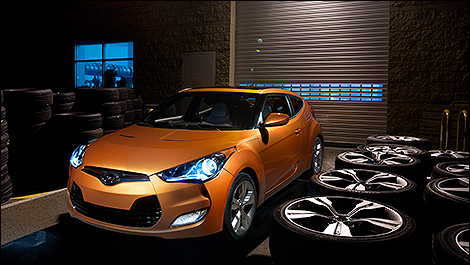Nov
25th
Stay connected Subscribe to our RSS feed
A manufacturer's design department has the toughest job of all: The right roofline, fascia or beltline can make a car, create hype, and temporarily flood dealerships with potential buyers. The opposite is also true. In this case, a failure is a failure, and they move on.
What if the sharply designed car is gushed over by media, sells like hotcakes and then... nothing? Well, maybe not “nothing,” but a marked slowdown is evident after only 18 months of its market launch.
A marked slowdown seems to be the case with Hyundai and Kia, the giant Korean manufacturers that could do no wrong over the last three years or so. Their sales year-over-year are both currently dropping, and I can't help but think that it all has to do with design and not content or value.
To be sure, I'm still a fan of both brands as they both make great products. They're still value-packed, reliable enough, and good to drive; but what made them such hits is now hurting them.
I just stepped out of a Hyundai Veloster, which is a true testament to the maker's audacity. The shape of the car, its unusual three-door configuration and bold look made it a smash hit the day it landed in dealer showrooms. Its impact was so huge that a 2013 (vs. a 2012) is artificially dated, which is quite sad. A consumer wants something new, the latest, not something that was a hit last year. A little messed up if you ask me, but a fact nonetheless.
The same goes for the Elantra. It knocked my socks off almost three years ago; but today, it‘s fizzled out. A strong initial visual impact goes a long way, but is detrimental in the medium run.
The risks and fearlessness displayed by the Koreans has worked to put their names on the tops of shoppers' lists. Could it be that it has had the exact opposite effect now that the dust has settled? Throw in a new Toyota Corolla and Mazda3; two more “conventional” cars now with new designs, and Hyundai and Kia have a small crisis on their hands. At least it seems that way.
To start a trend is something, to keep it going is something else altogether. Sometimes, being first has its short-term rewards, but also carries consequences.
What's interesting here is that both Kia and Hyundai have plenty left up their sleeves, as does the competition. I suspect that before the industry settles into a mellower product cycle, every 3-4 years without change as it was 15 years ago, we might witness something akin to yearly or bi-yearly updates that were common 50+ years ago.
So, remember that the new 2012 Civic was revised for 2013, and the latest Malibu was also rethought in a very short period, as well... What do you think of all this?
What if the sharply designed car is gushed over by media, sells like hotcakes and then... nothing? Well, maybe not “nothing,” but a marked slowdown is evident after only 18 months of its market launch.
A marked slowdown seems to be the case with Hyundai and Kia, the giant Korean manufacturers that could do no wrong over the last three years or so. Their sales year-over-year are both currently dropping, and I can't help but think that it all has to do with design and not content or value.
To be sure, I'm still a fan of both brands as they both make great products. They're still value-packed, reliable enough, and good to drive; but what made them such hits is now hurting them.
I just stepped out of a Hyundai Veloster, which is a true testament to the maker's audacity. The shape of the car, its unusual three-door configuration and bold look made it a smash hit the day it landed in dealer showrooms. Its impact was so huge that a 2013 (vs. a 2012) is artificially dated, which is quite sad. A consumer wants something new, the latest, not something that was a hit last year. A little messed up if you ask me, but a fact nonetheless.
The same goes for the Elantra. It knocked my socks off almost three years ago; but today, it‘s fizzled out. A strong initial visual impact goes a long way, but is detrimental in the medium run.
The risks and fearlessness displayed by the Koreans has worked to put their names on the tops of shoppers' lists. Could it be that it has had the exact opposite effect now that the dust has settled? Throw in a new Toyota Corolla and Mazda3; two more “conventional” cars now with new designs, and Hyundai and Kia have a small crisis on their hands. At least it seems that way.
To start a trend is something, to keep it going is something else altogether. Sometimes, being first has its short-term rewards, but also carries consequences.
What's interesting here is that both Kia and Hyundai have plenty left up their sleeves, as does the competition. I suspect that before the industry settles into a mellower product cycle, every 3-4 years without change as it was 15 years ago, we might witness something akin to yearly or bi-yearly updates that were common 50+ years ago.
So, remember that the new 2012 Civic was revised for 2013, and the latest Malibu was also rethought in a very short period, as well... What do you think of all this?
 |
| Photo: Hyundai |
 The latest auto news, reviews, prices, product and vehicle releases.
The latest auto news, reviews, prices, product and vehicle releases.